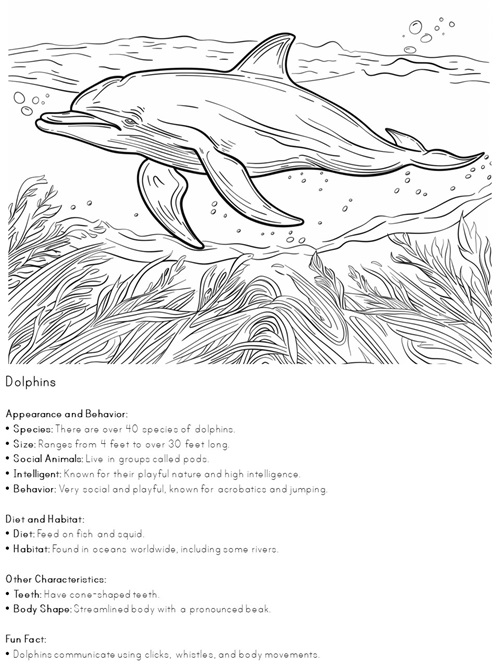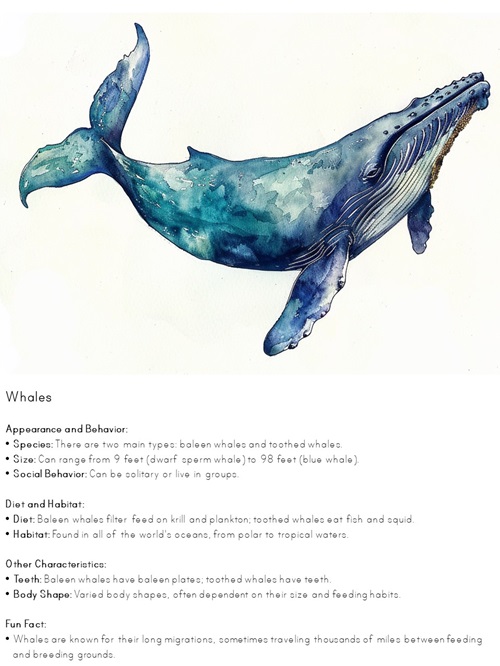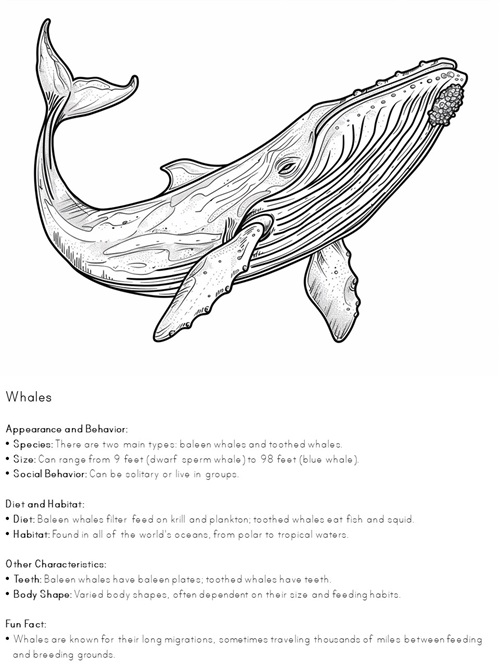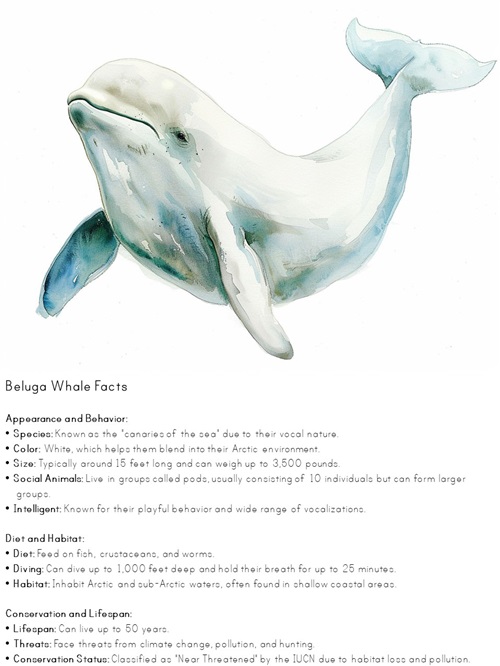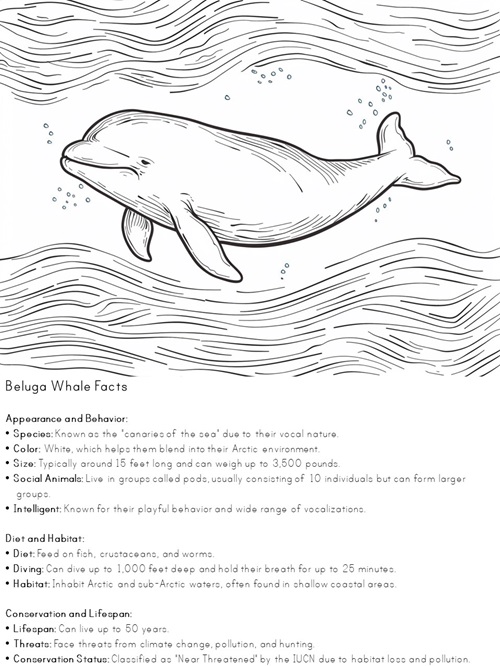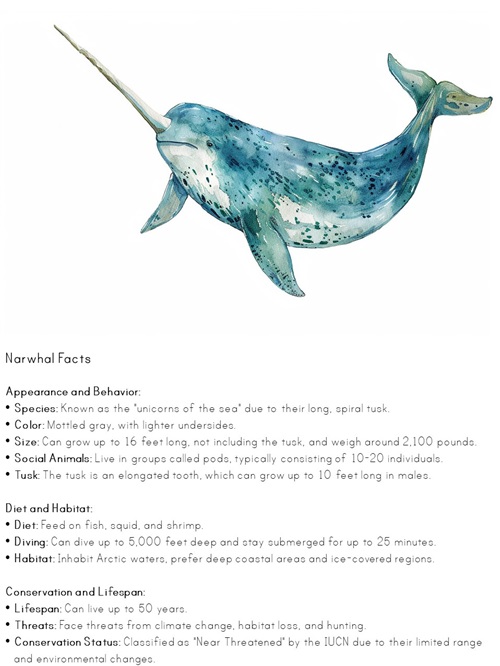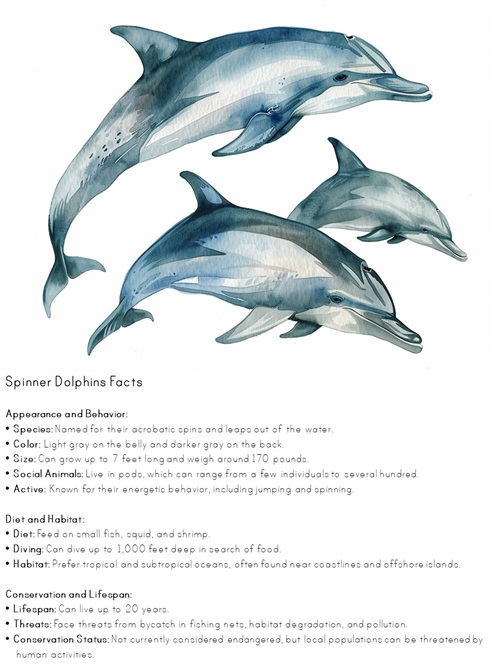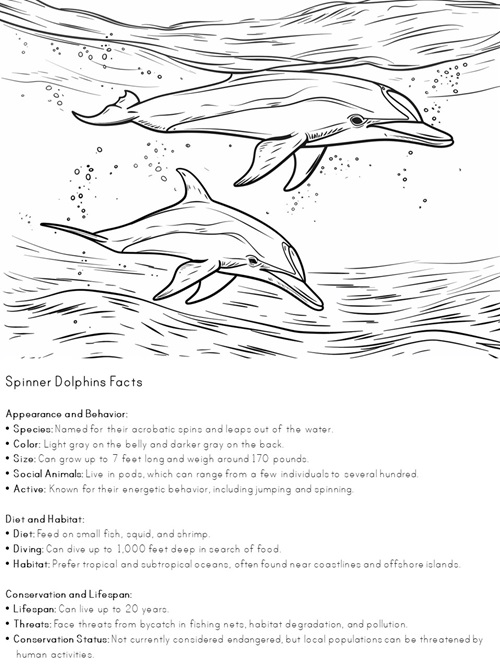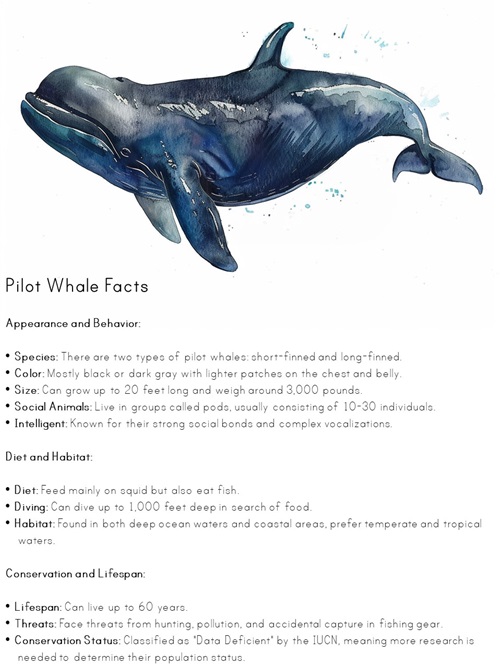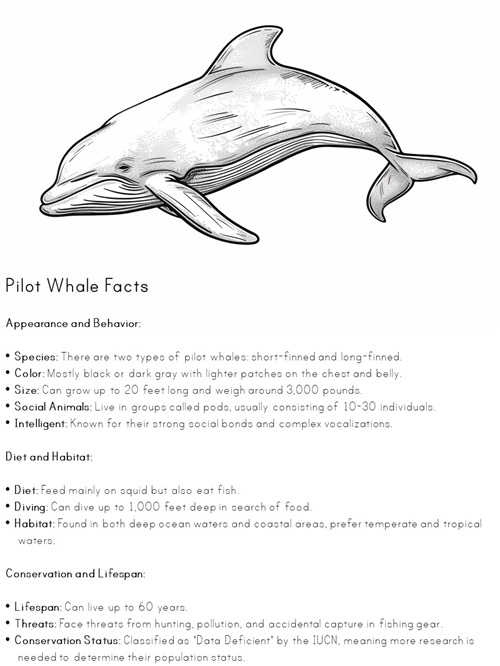KidZone Animals
Who is Who? Dophins vs Porpoise vs Whales
Marine mammals such as whales, dolphins, and porpoises are fascinating creatures that belong to the order Cetacea. These animals are divided into several families, each with unique characteristics.
Key Points
- Porpoises generally belong to the family Phocoenidae and typically have a more robust body, a shorter beak, and, in many species, a triangular dorsal fin (if they have one at all).
- Dolphins belong to the family Delphinidae, which includes many species commonly called dolphins as well as some called whales (like the pilot whale and the killer whale/orca). They usually have a more elongated body, a pronounced beak, and a curved dorsal fin.
- Whales can belong to several different families within the order Cetacea, including both baleen whales (Mysticeti) and toothed whales (Odontoceti).
Common Names vs. Scientific Classification
Common names can often be misleading and don't always match the scientific classification. Many marine mammals are known by names that reflect their appearance, behavior, or cultural significance rather than their scientific relationships. For example, the term "killer whale" suggests a large whale, but orcas are actually the largest members of the dolphin family. Similarly, the pilot whale, despite its name, is also a type of large dolphin.
The common names we use may lead to misconceptions about the true nature of these animals. Scientific classification, based on anatomical and genetic evidence, provides a more accurate understanding of their relationships. For instance:
- Porpoises: These animals are often confused with dolphins due to their similar size and habitat. However, porpoises belong to the family Phocoenidae and typically have a more robust body and a shorter beak.
- Dolphins: These belong to the family Delphinidae, which includes many species called dolphins and some called whales, like the orca and pilot whale. They usually have a more elongated body and a pronounced beak.
- Whales: This group includes both baleen whales (Mysticeti) and toothed whales (Odontoceti). Baleen whales are filter feeders with baleen plates, while toothed whales have teeth and include species like the sperm whale.
Understanding these distinctions helps us appreciate the diversity and complexity of marine mammal species. It also emphasizes the importance of using scientific names for clarity and accuracy in research, conservation, and education.
Dolphins vs Porpoise vs Whales facts coloring pages and posters
Baleen Whales (Mysticeti)

Baleen whales, also known as Mysticeti, are the gentle giants of the ocean, known for their impressive size and unique feeding mechanism. Instead of teeth, these whales have baleen plates made of keratin (the same material as your hair and nails), which they use to filter feed on small fish and plankton. Let’s meet three of the most fascinating members of the baleen whale family:
-
Blue Whale (Balaenoptera musculus)
- Description: The largest animal ever known to have existed. They can reach lengths of up to 100 feet and weigh as much as 200 tons.
- Habitat: Found in all the world's oceans except the Arctic.
-
Humpback Whale (Megaptera novaeangliae)
- Description: Known for their distinctive body shape, long pectoral fins, and complex songs. They are also famous for their acrobatic breaches.
- Habitat: Found in oceans and seas around the world, typically in coastal waters.
-
Gray Whale (Eschrichtius robustus)
- Description: Recognizable by their gray color and rough skin. They undertake one of the longest migrations of any mammal, traveling up to 12,000 miles round-trip.
- Habitat: Found in the North Pacific Ocean, migrating between feeding grounds in the Arctic and breeding grounds off the coasts of Mexico.
Toothed Whales (Odontoceti)

Toothed whales, or Odontoceti, are a diverse group of marine mammals known for their intelligence, social structures, and, of course, their teeth! Unlike their baleen counterparts, these whales use their teeth to hunt and eat a variety of prey, from squid to fish. Let's dive into the lives of three captivating members of the toothed whale family:
-
Sperm Whale (Physeter macrocephalus)
- Description: The largest of the toothed whales, known for their massive heads and prominent rounded foreheads. They have a distinctive blowhole located on the left side of their head.
- Habitat: Found in all the world's oceans, typically in deep waters.
-
Beluga Whale (Delphinapterus leucas)
- Description: Known for their white color and high-pitched, bird-like calls. They are highly social and often found in groups.
- Habitat: Found in Arctic and sub-Arctic regions, primarily in shallow coastal waters and river estuaries.
-
- Description: Known for the long, spiral tusk that protrudes from the males' heads, which is actually an elongated tooth. They are often called the "unicorns of the sea."
- Habitat: Found in Arctic waters, primarily around Greenland, Canada, and Russia.
Dolphins (Family: Delphinidae)
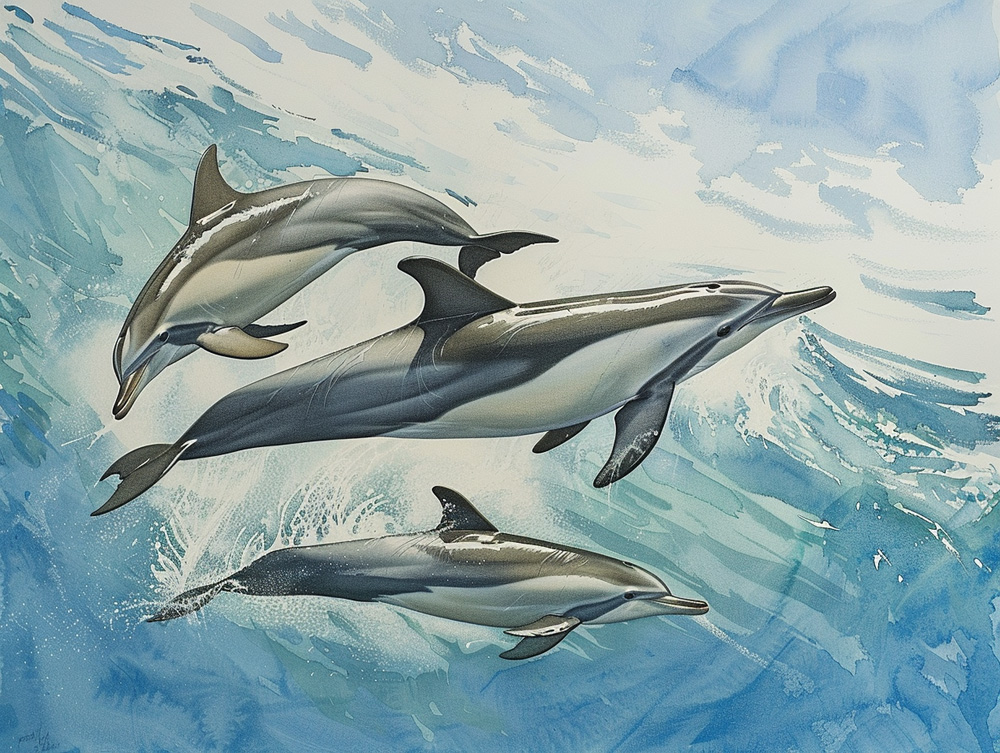
Dolphins, belonging to the family Delphinidae, are among the most intelligent and charismatic of marine mammals. Known for their playful behavior and complex social structures, these creatures captivate our imagination with their acrobatics and interactions. Let’s explore five of the most fascinating members of the dolphin family:
-
Bottlenose Dolphin (Tursiops truncatus)
- Description: Probably the most well-known dolphin species, recognized by their curved dorsal fins, streamlined bodies, and characteristic "smile."
- Habitat: Found in warm and temperate seas worldwide, both inshore and offshore.
-
Common Dolphin (Delphinus delphis)
- Description: Known for their hourglass pattern on the sides and impressive leaping abilities. They are highly social and often found in large groups.
- Habitat: Found in warm-temperate and tropical oceans.
-
Spinner Dolphin (Stenella longirostris)
- Description: Named for their acrobatic spinning jumps. They have a slender body and a long, thin beak.
- Habitat: Found in tropical and subtropical oceans worldwide.
-
Orca or Killer Whale (Orcinus orca)

- Description: The largest member of the dolphin family, recognizable by their black-and-white coloring and prominent dorsal fin. They are apex predators with complex social structures.
- Habitat: Found in all the world's oceans, from the Arctic and Antarctic regions to tropical seas.
-
Pilot Whale (Genus: Globicephala)

- Description: There are two species: the long-finned pilot whale (Globicephala melas) and the short-finned pilot whale (Globicephala macrorhynchus). They are known for their strong social bonds and bulbous foreheads.
- Habitat: Found in deep offshore waters, often in temperate and tropical regions.
Porpoise Species (Family: Phocoena)
Porpoises, belonging to the family Phocoenidae, are small but remarkable marine mammals known for their robust bodies and often shy behavior. Though they may be less famous than their dolphin cousins, porpoises play crucial roles in marine ecosystems. Let’s meet three of the most intriguing members of the porpoise family:
-
Harbour Porpoise (Phocoena phocoena)
- Description: One of the smallest marine mammals, with a robust body and a short, blunt snout. They have a small, triangular dorsal fin.
- Habitat: Found in coastal and shelf waters of the Northern Hemisphere, including the North Atlantic, North Pacific, and the Black Sea.
-
Dall's Porpoise (Phocoenoides dalli)
- Description: Recognizable by their striking black and white coloration and robust, stocky body. They are known for their high-speed swimming and distinctive "rooster tail" splash.
- Habitat: Found in the North Pacific Ocean, from the Sea of Japan to the Gulf of Alaska and down to Baja California.
-
Vaquita (Phocoena sinus)
- Description: The smallest and most endangered cetacean species, with a compact body and distinctive dark rings around the eyes and mouth. They have a small, triangular dorsal fin.
- Habitat: Endemic to the northern part of the Gulf of California, Mexico.
These porpoises are notable for their distinct physical features and habitats. The vaquita, in particular, is critically endangered and has garnered significant conservation attention.
Conclusion
Exploring the diverse world of marine mammals, from the majestic baleen whales to the intelligent dolphins and the often-overlooked porpoises, reveals the incredible variety and complexity of life in our oceans. Each species, with its unique characteristics and habitats, plays a vital role in maintaining the health and balance of marine ecosystems.
Whether it's the awe-inspiring size of the blue whale, the playful nature of the bottlenose dolphin, or the critical conservation needs of the vaquita, these marine mammals captivate our imaginations and inspire efforts to protect their environments. By understanding and appreciating the differences between these remarkable creatures, we can foster a greater sense of stewardship for our oceans and all the life they support.
Next time you think about the ocean's inhabitants, remember that common names might sometimes be misleading, but scientific names help us truly understand these fascinating animals. Continue to explore the wonders of marine life, knowing that every creature has a story worth telling.

